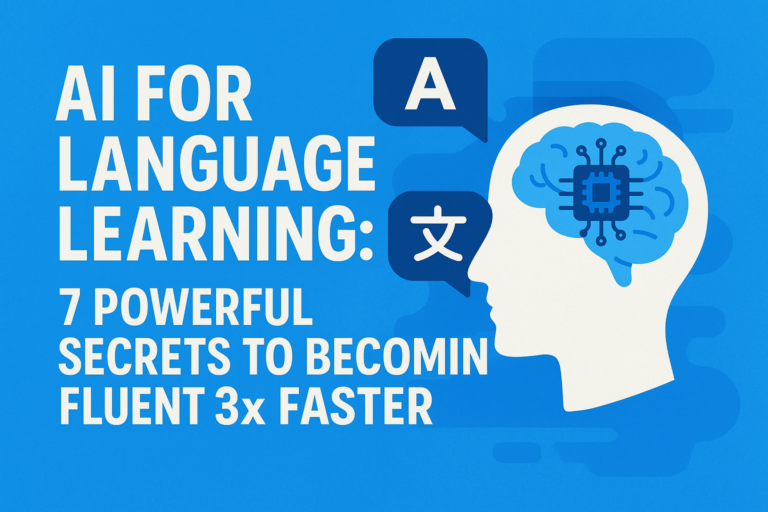In today’s hypercompetitive landscape, 70% of small and medium-sized businesses report feeling pressured by larger competitors’ technological advancements.
Holding onto customers without a strategic advantage becomes increasingly difficult.
But what if I told you that implementing a cutting-edge AI business strategy could revolutionize the way you connect with your audience and drive growth?
In this comprehensive guide, we’ll break down a strategic framework that enables businesses like yours to harness the power of artificial intelligence without overwhelming your team. Ready to transform your business operations and customer engagement? Let’s dive in.
The Strategic Toolkit
Before diving into implementation, let’s explore the essential tools that form the backbone of a comprehensive AI business strategy. These components ensure your AI initiatives are not just technologically sound, but strategically aligned with your core business objectives.
AI Business Strategy Foundation
Just as a house requires a solid foundation, your AI business strategy begins with understanding three critical elements:
Who do you want to reach?
Beyond demographics, analyze psychographic factors, online behavior, and purchasing patterns to create comprehensive buyer personas.
What are your core business goals?
Define 2-3 measurable objectives you want to accomplish through AI implementation.
What are your unique strengths?
Identify the business capabilities that complement AI technology for maximum impact.
AI Software Tools
Let’s explore two practical tools that have proven effective for businesses of various sizes, offering remarkable ROI without requiring deep technical expertise.
First, HubSpot‘s COS provides comprehensive AI-powered insights and automation capabilities. Their platform integrates seamlessly with CRM systems, offering robust lead scoring and predictive analytics. Visit their homepage to learn more.
Second, Liau AI specializes in personalized marketing content generation and conversational AI solutions. Their platform helps your team craft authentic, brand-consistent messages that resonate with your audience.
Role of Human Expertise
A common misconception about implementing AI is that human involvement isn’t necessary. On the contrary, the most successful AI strategies assign experienced professionals to guide the technology, ensuring it aligns with your company’s values and objectives.
This “guide” role encompasses quality assurance, strategic direction, and ongoing optimization—functions that cannot be replaced by automation alone.
Time & Resource Investment
The gap between traditional methods and AI-powered approaches extends beyond functionality to practical implementation. Let’s quantify the difference:
Manual Approach
| Task | Time Required | Personnel Required |
|---|---|---|
| Data analysis | 40 hours | 2 analysts |
| Pattern identification | 30 hours | 1 analyst |
| Content creation | 20 hours | 1 writer |
This conventional method requires approximately 90 hours from your team and significant coordination across departments.
AI Business Strategy Approach
| Task | Time Required | Personnel Required |
|---|---|---|
| Data analysis | 5 hours | Minimal input |
| Pattern identification | 2 hours | Minimal input |
| Content creation | 4 hours | 1 person for oversight |
The AI methodology dramatically reduces implementation time, requiring only 11 hours total versus the manual approach’s 90-hour commitment—a staggering 90% time reduction according to McKinsey research. Additionally, the ROI for first AI strategy implementation typically shows a 150% return within the first six months, based on case studies from businesses that successfully scaled their AI operations.
The Implementation Blueprint
Let’s transform this AI Business Strategy into actionable steps you can implement immediately:
Step 1: Define Your AI Objectives
Start with clear, measurable goals aligned with your broader business strategy. Questions to consider: “How will AI improve customer satisfaction?” or “What efficiency gains can we achieve?”
Step 2: Identify Your Foundation Task
Select your highest-priority business process—typically customer service, content creation, or data analysis.
Step 3: Acquire Your AI Tool
Based on your objectives, implement HubSpot COS or Liau AI, or consider specialized solutions like Sellics for e-commerce optimization.
Step 4: Integrate Your Data
Export your CRM data, customer service logs, and content metrics from existing platforms.
Step 5: Train Your AI
Input your brand voice, company values, and sample customer interactions to guide the AI’s outputs.
Step 6: Monitor and Optimize
Use built-in analytics to track results, identify patterns, and adjust your strategy accordingly.
Step 7: Scale Your Success
Once you’ve validated your approach, expand into adjacent processes and workflows.
Pro-Tip: Schedule weekly review sessions with your AI outputs documented in a shared dashboard to spot trends early and adjust your strategy proactively.
Measuring Success: KPIs & ROI
How do you ensure your AI business strategy delivers meaningful results? Track these three crucial metrics consistently:
| Metric | What It Tells You | Measurement Frequency |
|---|---|---|
| Conversion Rate Increase | Expansion from inbound leads into customers | Weekly |
| Customer Satisfaction Scores | Productivity and quality of interactions | Monthly |
| Time-to-resolution | Efficiency gains in customer service | Quarterly |
Track these KPIs consistently, and your efforts with your first AI strategy will directly influence business performance. Supplement these standard metrics with industry-specific indicators:
- For e-commerce businesses, track average order value (AOV) and cart abandonment rate
- B2B organizations should measure sales cycle length and revenue per lead
- Service companies can monitor response time and follow-up effectiveness
Scaling & Advanced Strategies
Once your initial AI implementation gains traction, consider these elevation tactics:
Hyper-Personalization Roadmap
Segment your audience into micro-groups based on behavior, expanding beyond demographics to include psychographic and contextual factors.
Cross-Channel Orchestration
Connect your AI tools across multiple platforms—CRM, social media management tools, website analytics, and email marketing—for seamless customer journeys.
Intelligent Forecasting Implementation
Utilize predictive AI to anticipate market shifts, customer needs, and emerging opportunities before competitors.
Strategic Business Applications
Let’s explore how this framework applies to various business models:
E-commerce Businesses:
Integrate AI into your product descriptions and customer service processes, enabling dynamic inventory management alongside visual search capabilities.
SaaS Companies:
Use AI-driven user onboarding, content recommendations, and support ticket resolution to reduce churn and increase expansion revenue.
Digital Agencies:
Deploy AI tools to enhance client reporting, campaign optimization, and creative development, freeing your team for strategic advice.
Common Strategic Pitfalls to Avoid
Even with the best intentions, businesses can derail their AI business strategy. Here’s how to avoid these mistakes:
Treating AI as a DIY Project:
Handing AI implementation to an unskilled team creates suboptimal results and potential reputational damage.Forgetting Brand Voice Integration:
AI output without clear brand guidelines risks customer alienation and inconsistent messaging.Getting Lost in the Tech Hype:
Focus on practical, low-complexity goals before scaling into advanced applications.
Building Your Content Engine: Systems & Automation
The most transformative benefit of implementing AI isn’t immediate gains—it’s the sustainable systems it enables. Create a content flywheel:
Automated Lead Scoring:
Use AI to evaluate leads based on behavior, eliminating manual work and improving qualification accuracy.
Predictive Campaign Optimization:
Deploy AI to forecast campaign success and recommend adjustments in real-time.
Centralized Knowledge Platform:
Establish a central repository where your team stores successful templates, brand guidelines, and case studies referenced by AI tools.
Conclusion
Integrating AI into your business strategy isn’t a technical upgrade—it’s a competitive advantage that delivers measurable growth. By following this framework, you’ll position your organization to thrive in the AI era.
Are you ready to transform your approach at minimal cost and complexity? Let us help you navigate your specific business needs.
Call to Action
What challenges are you facing with your current business processes? Share your thoughts and concerns in the comments below so we can provide tailored advice.
For a personalized consultation to explore how AI can drive your growth, schedule your discovery call today by clicking Schedule a Call.
Frequently Asked Questions
Is my business too small for AI implementation?
Many successful businesses started small and scaled their approach. AI solutions range from high-end enterprise platforms to lightweight tools that fit any budget.What is the longest it takes to see results with a first AI strategy?
Most businesses report noticeable improvements within 3-6 months. Set measurable objectives and monitor progress weekly for maximum visibility.How much technical expertise is required to start?
Modern AI tools prioritize ease of use, with clean interfaces and built-in guidance. You’ll need minimal technical knowledge, but hiring experienced AI implementation guidance will accelerate your results.




